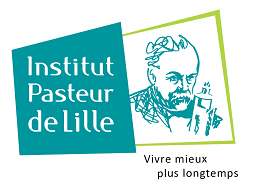Nuclear receptors in the gastrointestinal tract' - Prof. Bart Staels

Bart STAELS, PhD
Full Professor, Faculty of Pharmacy, University of Lille2, France
Contact info :
INSERM U1011 - Pasteur Institute of Lille-University Lille Nord de France - EGID
1 rue Calmette, BP245, 59019 Lille
Tel : +33(0)3.2087.7825
Email : bart.staels@pasteur-lille.fr
Short biography:
Bart Staels, PhD., is professor (‘classe exceptionnelle’) in the faculty of pharmacy at the University of Lille, Lille, France. He is director of the Inserm Unit UMR 1011 with laboratories (approx.100 persons) on the campus of the Institut Pasteur de Lille and the Research Pole of the University of Lille, Lille, France.
Pr. Staels earned his doctorate at the Institute for Pharmaceutical Sciences, University of Leuven, Belgium. He completed postdoctoral work at the Metabolic Research Unit, University of California, San Francisco and was postdoctoral research fellow of the Reverse Cholesterol Transport/Atherosclerosis Project, BioAvenir, Vitry sur Seine, France.
Pr. Staels is a member of learned societies such as the European Atherosclerosis Society, the International Atherosclerosis Society (Distinguished Fellow), the Nouvelle Société Française d’Athérosclérose, the Société Française de Diabète, the American Heart Association (Premium Professional Silver Heart Member), the American Diabetes Association and European Association for the Study of Diabetes. He is past-president of the Nouvelle Société Française d’Athérosclérose (NSFA; 2009-2011).
Pr. Staels is also co-founder of the biopharmaceutical company Genfit SA, and president of its Scientific Advisory Board. He is co-founder and board member of the European Genomic Institute for Diabetes (EGID).
He was appointed European corresponding member of the National Academy of Pharmacy in June 2011; Senior Member of the Institut Universitaire de France in October 2011 and received the International Francqui Professor Chair in 2013.
Pr Staels has been awarded the Young Investigator Award of the European Atherosclerosis Society, the Bronze Medal of the CNRS and the Lifetime Achievement Award of the British Atherosclerosis Society, the pharmaceutical “Barré” 2007 prize from the Faculté de Pharmacie of Montreal, and the French “JP Binet” prize from the Fondation pour la Recherche Médicale, Paris, in 2011. He is also recipient of the 2012 “Distinguished Leader in Insulin Resistance” award from the International Committee for Insulin Resistance (ICIR).
Pr. Staels’ research focuses on molecular pharmacology of cardiovascular and metabolic diseases, including dyslipidemia and type 2 diabetes. He particularly studies the role of nuclear receptors in the control of inflammation and lipid and glucose homeostasis as well as the transcriptional mechanisms involved. Pr. Staels was among the first to identify a crucial role for the nuclear receptor PPARalpha in the control of lipid and glucose metabolism as well as cardiovascular function in humans. He elucidated the action mechanism of the fibrate class of drugs that are currently used in the treatment of lipid disorders and worked also on the action mechanism of the glitazones, a class of anti-diabetic drugs. His work has identified the PPAR transcription factors as potential drug targets for the treatment of diabetes, dyslipidemia, cardiovascular disease and NAFLD, which contributed to the development of several novel therapeutic compounds, one of them is currently in phase IIb of clinical development.
To date, Pr. Staels has published more than 790 papers, including 200 review articles, and several book chapters.
He received the ISI citations award (citation number of 44024; h-index factor of 110 and average citation of 55/article). Based on the French 2007 Necker Institute dossier, Pr.Staels was between 2000-2005 among the 35 french researchers with the highest publication volume.
Pr. Staels is also reviewer for numerous international journals and has been invited speaker at many prestigious international meetings, including the IAS, AHA, ADA and IDF. He contributed to the organization of congresses such as the “International Symposia on PPARs”, the NSFA annual congress and was chairman the 2007 and 2012 Keystone Symposia on “Metabolic Syndrome” and “Genetic and Molecular Basis of Obesity and Body Weight Regulation”.
Keywords: Nuclear receptors, metabolic diseases, NASH/NAFLD, metabolic syndrome, type 2 diabetes, bile acids, PPARs, FXR, cardio-vascular disorders.
- Research interest:
The organism senses its energy status through the close communication of several organs (liver, adipose tissue, intestine, pancreas), which integrate multiple endocrine (hormones, inflammatory cytokines) and metabolic (glucose, free fatty acids and intermediary metabolites) signals. Dysregulation of the tight control of metabolism leads to dyslipidemia, insulin resistance and obesity which predispose to the development of cardiovascular complications due to atherosclerosis. Nuclear receptors play key roles in the (patho)physiological adaptation to alterations in energy status.
During the past few years we focused our research on the role of the fatty acid and fibrate-activated PPARs in whole-body metabolism and deciphered the molecular mechanisms of their anti-atherosclerotic activities. We also explored the role of the bile acid-activated nuclear receptor FXR in the regulation of lipid and glucose metabolism and identified FXR as a modulator of energy homeostasis.
To obtain further insights in the regulatory role of these nuclear receptors in metabolism and energy homeostasis, total- or organ-specific deficient or over-expressing animal models of the nuclear receptors of interest are already available or in development. The impact of these nuclear receptors is investigated by comparing them to wild-type mice with respect to basal metabolic parameters, energy expenditure, gene and protein expression and pharmacological response. Concomitantly, molecular approaches are applied to identify the molecular mechanisms at the basis of the identified physiological functions using various in vitro models and molecular biology approaches. Since nuclear receptors are potential pharmacological targets, the use of existing as well as the identification of novel synthetic ligands allow us to study the biological effects of these compounds. Finally, the role of these nuclear receptors in human physiology is investigated by analysis of tissue biopsies from subjects suffering from metabolic disorders, obtained through our active participation in different European and national consortiums. It is expected that these approaches will uncover new therapeutic strategies for the treatment of metabolic diseases such as type 2 diabetes and dyslipidemia.
- Current projects:
Project 1: “NASH, Metabolic Syndrome and PPARs”
NAFLD is the liver phenotype of the metabolic syndrome, for which treatment options are lacking and its diagnosis by biopsy is not optimal. Thus, there is an urgent need to identify molecular signatures and markers of obesity-driven NASH and the response to treatment. We aim to identify networks associated with NAFLD and to discover potential biomarkers and therapeutic targets for NASH treatment by performing 1/ translational studies on human cohorts of NAFLD; 2/ preclinical studies in murine model of NAFLD; 3/ mechanistic and pharmacological studies on PPAR functions in the liver.
Project 2: “Bile Acids, FXR and the Metabolic Syndrome”
Bile acids control bile acid, lipid and glucose metabolism acting through the nuclear receptor Farnesoid X Receptor (FXR) and the G protein-coupled membrane receptor TGR5. We will study the role of bile acids in lipid and glucose metabolism by 1/ analysis of human tissues (liver, intestine, adipose tissue); 2/ studying the pathophysiological functions of FXR in metabolic tissues using organ-specific FXR-deficient mice; 3/ mechanistic in vitro approaches; 4/ pharmacological studies.
- Our Competences
- Lipid and lipoprotein measures, Determination of lipid distribution profiles
- Histology, Ultra-microtomy, Immunohistochemistry, Microscopy, Laser capture microdissection
- Immunophenotyping
- Cellular Biology : Human and murine hepatic cells including primary hepatocytes, murine preadipocyte cells, murine fibroblastic cells, human leukocyte cells, murine beta-pancreatic cells, human kydney cells, murine enteroendocrine cells, murine and human primary monocytes and macrophages
- Molecular Biology (Microarray, Proteomic analysis, Real time PCR)
- In Vivo : Animal imaging (scanner/MRI small animal), Bone marrow transplantation, Measures of animal metabolic function, Genetically modified animal models.
- Transversal collaboration with clinical team (refer to ” partners“)
- Selected Publications:
Obesity paradox in the clinical significance of effective prostheric orifice area after aortic valve replacement.
A. Coisne, S. Ninni, J.L. Edme, T. Modine, S. Mouton, R. Pilato, H. Ridon, M. Richardson, C. Klein, S. Ortmans, C. Seunes, A.L. Madika, G. Ledieu, M. Jacquelinet, B. Boutie, A. Altes, F. Vincent, M. Koussa, B. Jegou, A. Vincentelli, F. Juthier, E. Robin, B.Staels, P. Lancellotti, D. Montaigne
J. Am. Coll. Cardiol. 2018, accepted for publication.
Endospanin-2 enhances skeletal muscle energy metabolism and running endurance capacity.
S. Lancel, M.K. Hesselink, E. Woldt, Y. Rouille, E. Dorchies, S. Delhaye, C. Duhem, Q. Thorel, A. Mayeuf-Louchart, B. Pourcet, V. Montel, G. Schaart, N. Beton, F. Picquet, O. Briand, J.P. Salles, H. Duez, P. Schrauwen, B. Bastide, B. Bailleul*, B. Staels*, Y. Sebti*
JCI Insight 2018; Epub. *Co-last authors.
Daytime variation of perioperative myocardial injury in cardiac surgery and its prevention by Rev-erba antagonism: a single-centre propensity-matched cohort study and a randomised study.
D. Montaigne, X. Marechal, T. Modine, A. Coisne, S. Mouton, G. Fayad, S. Ninni, C. Klein, S. Ortmans, C. Seunes, C. Potelle, A. Berthier, C. Gheeraert, C. Piveteau, R. Deprez, J. Eeckhoute, H. Duez, D. Lacroix, B. Deprez, B. Jegou, M. Koussa, J.L. Edme, P. Lefebvre, B. StaelsThe Lancet, 2018, 391, 59-69.
Clinical significance of right ventricular longitudinal function parameters after aortic valve replacement.
A. Coisne, T. Modine, F. Outteryck, S. Mouton, R. Pilato, H. Ridon, B. Staels, D. Montaigne
JACC Cardiovasc Imaging, 2018, 11, 651-652.
Bile acid alterations are associated with insulin resistance, but not with NASH, in obese subjects.
V. Legry, S. Francque, J.T. Haas, A. Verrijken, S. Caron, O. Chavez-Talavera, E. Vallez, L. Vonghia, E. Dirinck, A. Verhaegen, M. Kouach, S. Lestavel, P. Lefebvre, L. Van Gaal, A. Tailleux, R. Paumelle, B. Staels
J. Clin. Endocrinol. Metab., 2017, 102, 3783-3794.
Cardiopulmonary exercise testing is a better outcome predictor than exercise echocardiography in asymptomatic aortic stenosis.
O. Domanski, M. Richardson, A. Coisne, A.S. Polge, S. Mouton, F. Godart, J.L. Edme, R. Matran, P. Lancellotti, D. Montaigne
Int. J. Cardiol., 2017, 227, 908-914.
Human alternative macrophages populate calcified areas of atherosclerotic lesions and display impaired RANKL-induced osteoclastic bone resorption activity.
G. Chinetti-Gbaguidi, M. Daoudi, M. Rosa, M. Vinod, L. Louvet, C. Copin, M. Fanchon, J. Vanhoutte, B. Derudas, L. Belloy, S. Haulon, C. Zawadzki, S. Susen, Z.A. Massy, J. Eeckhoute, B. Staels
Circ. Res., 2017; 121, 19-30. With accompanying editorial.
Reviews:
Alternative macrophages in atherosclerosis: not always protective!
B. Pourcet, B. Staels
J. Clin. Invest., 2018, 128, 910-912.
Bile acid control of metabolism and inflammation in obesity, type 2 diabetes, dyslipidemia, and nonalcoholic fatty liver disease.
O. Chavez-Talavera, A. Tailleux, P. Lefebvre, B. Staels
Gastroenterology, 2017, 152, 1679-1694.
- News:
Press releases
- Open positions:
Applications for postdoctoral fellows and PhD program are welcome. If interested, please send a cover letter and an updated CV to Bart Staels (bart.staels[chez]pasteur-lille[point]fr).


